There are all kinds of ways to bring math into a young child’s life. You can count birds outside the window. You can talk about shapes and give them names. Discuss measurements while cooking.
Our favorite way is to read stories and look at picture books, absorbing math concepts easily. Here are some of our favorites for children ages 4 and up, some for younger kids, some older, because age doesn’t matter as much as interest.
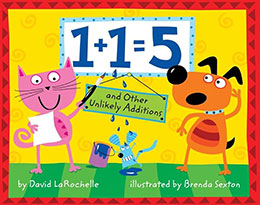
1+1=5: and Other Unlikely Additions
written by David LaRochelle
illustrated by Brenda Sexton
Union Square Kids, 2010
How much is 1+1? Think the answer is 2? Not always, as this playful approach to addition proves! David LaRochelle takes children on a joyful mathematical journey that will engage their minds and teach them to think about numbers in a creative, outside-the-box way. Brenda Sexton’s wild and wacky illustrations add layers of witty fun to LaRochelle’s clever game. These wacky equations don’t add up … or do they?
1 goat + 1 unicorn = 3 horns!
1 set of triplets + 1 set of twins = 5 babies!
1 duet + 1 quartet = 6 musicians!
1 ant + 1 spider = 14 legs!
1 century + 1 decade = 110 years!
12 Ways to Get to Eleven
written by Eve Merriam
illustrated by Bernie Karlin
Simon & Schuster, 1993
1 2 3 4 5 6 7 8 9 10 __ 12 What happened to 11?
Is it in the magician’s hat? Maybe it’s in the mailbox or hiding in the jack‑o’-lantern? Don’t forget to look in the barnyard where the hen awaits the arrival of her new little chicks. Could that be where eleven went?
100 Mighty Dragons All Named Broccoli
written by David LaRochelle
illustrated by Lian Cho
Dial Books, 2023
High on a mountain live 100 mighty dragons all named Broccoli. When a tremendous wind blows half the dragons away, ten others sail off to become professional surfers in Hawaii. The oldest and youngest dragons take a train to New York City to start their own heavy metal band. And a mysterious wizard turns four more into a unicorn, a werewolf, a zombie, and a tiny pink poodle. Now how many dragons are left? Young readers will delight in following each and every dragon as they leave their home for marvelous adventures, until there is but one dragon remaining. That’s when this final dragon named Broccoli retreats to a cave for the winter and reappears in the spring with a surprise that will thrill and delight. Prepare to read again!
Anno’s Counting Book
written and illustrated by Mitsumaso Anno
Thomas Y. Crowell, 1977
Every child is a natural mathematician, according to Mitsumasa Anno. Children are constantly comparing and classifying things and events they observe around them. As they try to bring sense and order into what they observe, they are actually performing basic mathematical feats.
Gentle watercolor pictures show a landscape changing through the various times of day and the turning seasons, months and years, and the activities of the people and animals who come to live there. But the seemingly simple plan of the book is deceptive: look more carefully and you will see one-to-one correspondences; groups and sets; scales and tabulations; changes over time periods; and many other mathematical relationships as they occur in natural, everyday living. The reader is subtly led to see and understand the real meaning of numbers.
Blockhead: The Life of Fibonacci
written by Joseph D’Agnese
illustrated by John O’Brien
Henry Holt, 2010
As a young boy in medieval Italy, Leonardo Fibonacci thought about numbers day and night. He was such a daydreamer that people called him a blockhead.
When Leonardo grew up and traveled the world, he was inspired by the numbers used in different countries. Then he realized that many things in nature, from the number of petals on a flower to the spiral of a nautilus shell, seem to follow a certain pattern.
The boy who was once teased for being a blockhead had discovered what came to be known as the Fibonacci Sequence!
Each Orange Had 8 Slices: A Counting Book
written by Paul Giganti, Jr.
illustrated by Donald Crews
Greenwillow Books, 1992
If each orange has 8 slices and each slice has 2 seeds, then how many seeds are there in all? You’ll have fun multiplying, adding, and counting your way through the math puzzles hiding in the world all around you.
Clear and colorful artwork by Donald Crews, the award-winning creator of Freight Train and Truck, gives young readers helpful hints to solve the engaging and age-appropriate word problems.
Fannie in the Kitchen: The Whole Story from Soup to Nuts of How Fannie Farmer Invented Recipes with Precise Measurements
written by Deborah Hopkinson
illustrated by Nancy Carpenter
Atheneum, 2001
Marcia enjoys being her mother’s helper, so she’s hurt when Mother hires Fannie Farmer to prepare family’s meals. But sure enough Fannie’s charm (and griddle cakes!) win Marcia over, and she finds herself cooking up delights she never thought possible!
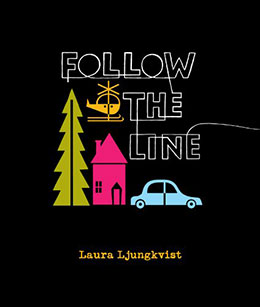
Follow the Line
written and illustrated by Laura Ljungkvist
Viking Books, 2006
Follow the line on a journey from the city to the country, from the sky to the ocean, from morning till night. Laura Ljungkvist uses her trademark continuous line style to create the perfect counting book for young children. Each scene contains questions designed to get children looking, counting, and thinking. For example, in the underwater picture, children can count seashells, turtles, and the legs on an octopus. Each page is packed with colorful, artful objects and animals — and young counters can follow the line from the front cover to the back cover, through each stunning scene.
How Do Dinosaurs Count to Ten?
written by Jane Yolen
illustrated by Mark Teague
Blue Sky Press, 2004
Come along for some BIG fun as your favorite dinosaurs delight young readers with their playful antics. How do dinosaurs count to ten? Over and over and over again!This brand new board book format brings the gigantic humor of bestselling, award-winning team Jane Yolen and Mark Teague to the youngest readers, helping them learn to count from one to ten with a simple, rhyming text and laugh-out-loud illustrations!
Inch by Inch
written and illustrated by Leo Lionni
Astor-Honor, Inc., 1960
A small green inchworm is proud of his skill at measuring anything — a robin’s tail, a flamingo’s neck, a toucan’s beak. Then one day a nightingale threatens to eat him if he cannot measure his song. Children will enjoy the clever inchworm’s solution and delight in finding the tiny hero on every page. Caldecott Honor book.
Lemonade in Winter:
A Book about Two Kids Counting Money
written by Emily Jenkins
illustrated by G. Brian Karas
Anne Schwartz Books, 2012
A lemonade stand in winter? Yes, that’s exactly what Pauline and John-John intend to have, selling lemonade and limeade – and also lemon-limeade. With a catchy refrain (Lemon lemon LIME, Lemon LIMEADE! Lemon lemon LIME, Lemon LEMONADE!), plus simple math concepts throughout, here is a read-aloud that’s great for storytime and classroom use.
My Rows and Piles of Coins
written by Tololwa M. Mollel
illustrated by E.B. Lewis
Clarion Books, 1999
“I emptied my secret money box, arranged the coins in piles and the piles in rows … ” The market is full of wonderful things, but Saruni is saving his precious coins for a red and blue bicycle. How happy he will be when he can help his mother carry heavy loads to market on his very own bicycle — and how disappointed he is to discover that he hasn’t saved nearly enough! Determination and generosity are at the heart of this satisfying tale set in Tanzania and illustrated with glowing watercolors that capture the warmth of Saruni’s family and the excitement of market day.
One Grain of Rice: A Mathematical Folktale
written and illustrated by Demi
Scholastic Press, 1997
Long ago in India, there lived a raja who believed that he was wise and fair. But every year he kept nearly all of the people’s rice for himself. Then when famine came, the raja refused to share the rice, and the people went hungry. Then a village girl named Rani devises a clever plan. She does a good deed for the raja, and in return the raja lets her choose her reward. Rani asks for just one grain of rice, doubled every day for thirty days. Through the surprising power of doubling, one grain of rice grows into more than one billion grains of rice — and Rani teaches the raja a lesson about what it truly means to be wise and fair.Demi’s exquisitely detailed art, inspired by traditional Indian miniature paintings, combine with her simple retelling to convey the heart and wisdom of this satisfying mathematical tale.
One is a Snail, Ten is a Crab: A Counting by Feet Book
written by April Pulley Sayre and Jeff Sayre
illustrated by Randy Cecil
Candlewick Press, 2003
What do one hundred sunbathing snails have in common with ten crabs in inner tubes? Check out this mirthful counting book with a focus on feet.
If one is a snail and two is a person, we must be counting by feet! Just follow the sign to the beach, where a bunch of fun-loving crabs, lounging dogs, gleeful insects, and bewildered-looking snails obligingly offer their feet for counting in a number of silly, surprising combinations — from one to one hundred!
The Rabbit Problem
written and illustrated by Emily Gravett
Simon & Schuster 2010
How does 1+1 = 288? A family of rabbits soon supplies the answer in this funny story! Hop along to Fibonacci’s Field and follow Lonely and Chalk Rabbit through a year as they try to cope with their fast expanding brood and handle a different seasonal challenge each month, from the cold of February to the wet of April and the heat of July. This extraordinary picture book is packed with gorgeous details and novelty elements including a baby rabbit record book, a carrot recipe book and a surprise pop-up ending.
Shape Search
written by Melissa Stewart
Reycraft Books, 2024
Nature is a masterpiece of shapes waiting to be discovered! In Melissa Stewart’s enchanting book, “Shape Search,” embark on a journey through the wilderness of geometry. Ever noticed the circle in a spider’s web, the rectangle in a bug’s body, or the star in a blooming flower? Let’s dive into the wonders of the natural world and unravel its hidden secrets! Shape Search Highlights: Circle of Life: From spider webs to dewdrops, circles are nature’s way of reminding us of the interconnectedness of all living things. Rectangular Realities: Bugs, leaves, and even certain rocks showcase the beauty of rectangles, teaching us the importance of structure and stability. Stellar Creations: Flowers, snowflakes, and seashells exhibit star-shaped patterns, reflecting the brilliance of symmetry in the universe. Your Turn to Explore: Look around you! What shapes can you find in your surroundings?
Snowman — Cold = Puddle
written by Laura Purdie Salas
illustrated by Micha Archer
Charlesbridge, 2019
Math meets metaphor in this eye-opening exploration of spring. Each clever equation is a tiny, perfect poem that prompts readers to look at the ordinary and see the miraculous. Can you look at an egg in a nest and see a jewelry box? How are sunlight and heat like an alarm clock? Engaging sidebars reveal the science behind the signs of spring.
Swirl by Swirl: Spirals in Nature
written by Joyce Sidman
illustrated by Beth Krommes
Clarion Books, 2011
What makes the tiny snail shell so beautiful? Why does that shape occur in nature over and over again — in rushing rivers, in a flower bud, even inside your ear?
With simplicity and grace, Sidman and Krommes not only reveal the many spirals in nature — from fiddleheads to elephant tusks, from crashing waves to spiraling galaxies — but also celebrate the beauty and usefulness of this fascinating shape.
Ten Black Dots
written and illustrated by Donald Crews
Greenwillow Books, 1995
What can you do with ten black dots?
One dot can make a sun, two dots can make the eyes of a fox, and three dots can make a snowman’s face.
And that’s just the beginning in this unique counting book! Children will develop visual learning skills, explore creativity, and practice counting numbers, all in one deceptively simple — and fun! — picture book.
What is Math?
written by Rebecca Kai Dotlich
illustrated by Sachiko Yoshikawa
What is math? So many things! Counting and calendars, weights and fractions, shapes and distances, charting and graphing. Math is the way we measure and code our world, from seasons to clocks, recipes, classrooms, and beyond. Math is all around us!
Readers will be introduced to:
– Graphs and charts — in the form of pizza pies!
– Counting and weight — when baking a cake!
– Shapes and word problems — to build a spaceship!
This rousing read aloud offers an engaging and accessible introduction to math — perfect for sparking an early interest in STEM subjects for preschool and early elementary school children. And be sure to keep an eye out for a friendly black cat and white dog on each spread as they participate in the math-related hijinks!
Which One Doesn’t Belong? Playing with Shapes
written and illustrated by Christopher Danielson
Charlesbridge, 2019
Recommended by David LaRochelle: On each page of this book are four shapes. Which one doesn’t belong? In actuality, a reason can be given why any of the given shapes doesn’t belong. Such a fun game that is sure to stretch the brains of both children and adults. Also check out Christopher’s math website and blog.
Zero the Hero
written by Joan Holub
illustrated by Tom Lichtenheld
Henry Holt, 2012
Zero. Zip. Zilch. Nada. That’s what all the other numbers think of Zero. He doesn’t add anything in addition. He’s of no use in division. And don’t even ask what he does in multiplication. (Hint: Poof!) But Zero knows he’s worth a lot, and when the other numbers get into trouble, he swoops in to prove that his talents are innumerable.

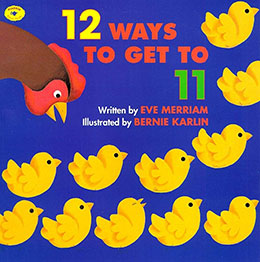
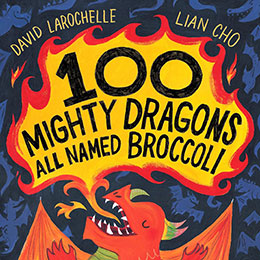
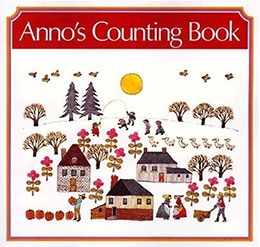
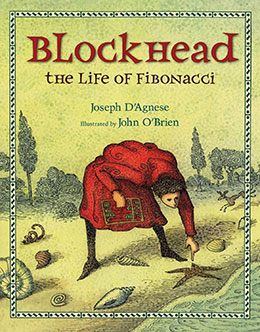
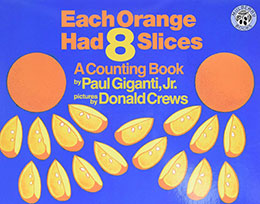
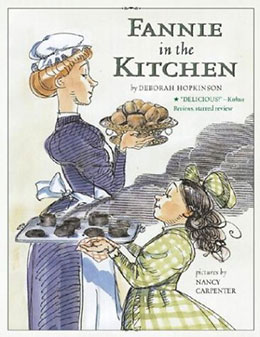
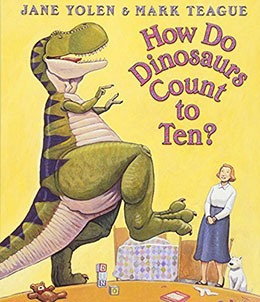
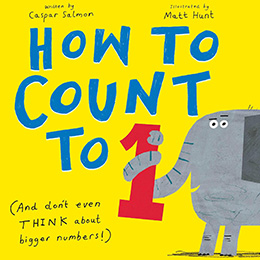
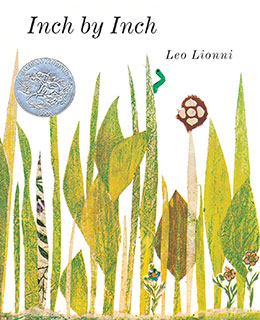
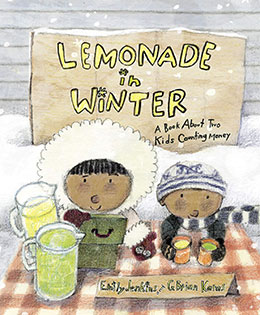
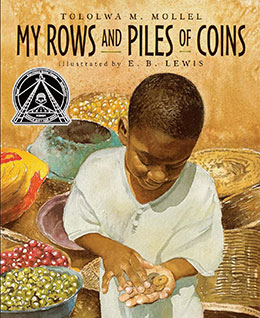
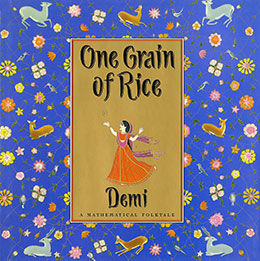
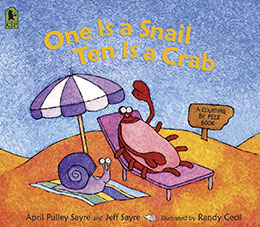
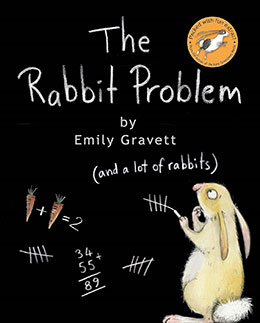
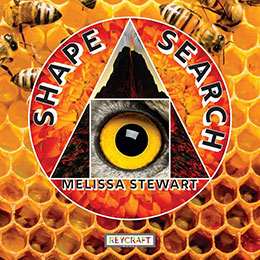
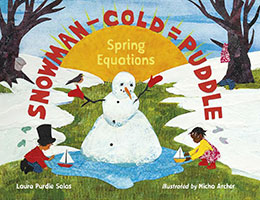

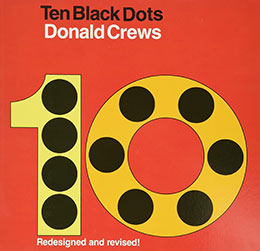
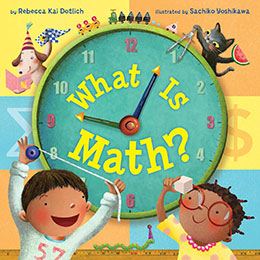
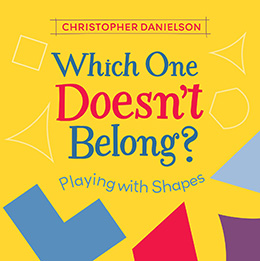
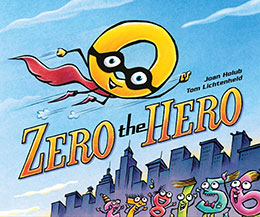
I’m delighted to have two of my books included in this wonderful list of math-themed books! Thank you! Two other favorites that I would add to any list of math picture books are: HOW TO COUNT TO ONE (and Don’t Even THINK about Bigger Numbers!), written by Caspar Salmon and illustrated by Matt Hunt. Youngsters will find it impossible to resist counting beyond one in this clever, hilarious counting book. WHICH ONE DOESN’T BELONG? by Christopher Danielson. On each page of this book are four shapes. Which one doesn’t belong? In actuality, a reason can be given why any of the given shapes doesn’t… Read more »